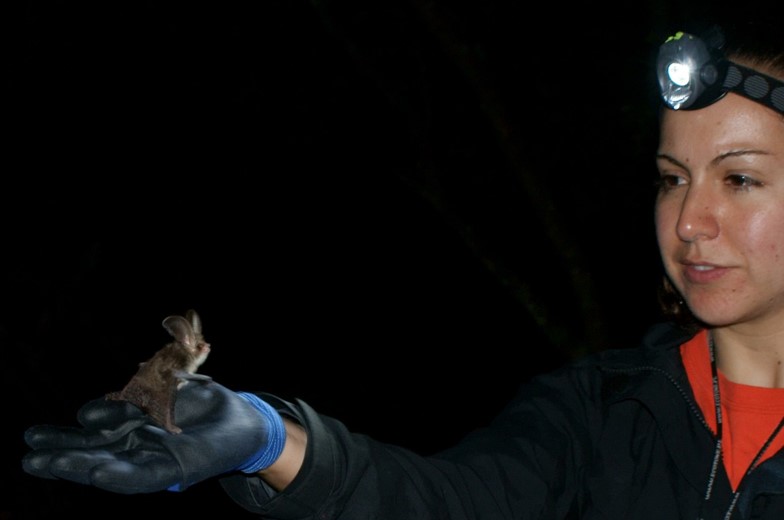The effects of 160 years of woodland creation on bats has been revealed by a natural experiment.
A study led by the University of Stirling has produced evidence of the characteristics of planted woodlands that are likely to benefit bats and other wildlife.

Dr Elisa Fuentes-Montemayor, Research Fellow, led the study.
The research is part of the innovative Woodland Creation and Ecological Networks (WrEN) project between the University of Stirling, Forest Research and Natural England, which is using a novel large-scale natural experiment to assess the impact of 160 years of woodland creation on current biodiversity. Taking advantage of the well-mapped changes in landscapes in England and Scotland since 1840, the researchers have identified woodlands planted between 10 and 160 years ago; there, they are studying a wide range of woodland species to understand their habitat requirements at different spatial scales.
Severe
The results, published in the journal ‘Ecological Applications’, show species of bat respond differently to local woodland attributes and the surrounding landscapes, depending on their mobility.
The study also shows that landscape characteristics, such as woodland connectivity, are most important for bats in intensively farmed landscapes where woodland loss and fragmentation have been more severe.
Lead author Dr Elisa Fuentes-Montemayor, Research Fellow at the University of Stirling, said: “These findings suggest that increasing the amount of woodland in a landscape would be a valuable conservation strategy for species which are highly mobile, such as Natterer’s bats.
“However, our study also suggests that specifically targeted planting to improve woodland connectivity is particularly important for less mobile species, for instance brown long-eared bats, which are often less likely to fly across open spaces. These bats are also more likely to benefit from activities which enhance local woodland quality, for example by managing woodlands to promote the old-growth habitat structure characteristic of mature forests.”
Conservation
Dr Kevin Watts from Forest Research said: “Some bats are known as ‘indicator species’ because changes to their populations can indicate changes in biodiversity. Many of the patterns we observed in bats are similar to those reported in the literature for other wildlife, such as birds, so our recommendations are likely to be useful in creating woodland valuable not only for bats but for other species too.
“During the WrEN project we’ll be studying other species including birds, insects and plants so we can draw together general principles for landscape scale conservation and restoration.”
Researchers hope this study will help to inform conservation actions and policies focused on the creation and restoration of habitats in landscapes where they have become fragmented.
Background information
Media enquiries to Emma Darling, Communications Office, on 01786 467760 or emma.darling@stir.ac.uk
WrEN has been funded by a range of organisations with an interest in the environment and land management including: Defra, Forest Research, National Forest Company, Natural England, Natural Environment Research Council, Scottish Natural Heritage, University of Stirling, Tarmac, with additional support from the Woodland Trust.
